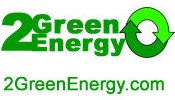






Developing Geothermal Energy at Low Temps
Taking a quick look at the low-temperature geothermal developments and prospects in Mexico, Canada, and the U.S.
Washington, DC, USA -- A large portion of the world's installed geothermal generation capacity is located in North America. The United States has 3086 MW of installed geothermal capacity and is the world's leading geothermal electricity generator. Mexico ranks fourth with 958 MW and new projects, all across the region, are underway. A few new high-temperature fields are under development: Blue Mountain in Nevada, which recently came online, is one such project. Additionally, much of the new geothermal power generation that has come online in the past 10 years has been from expansions of geothermal fields already connected to power grids. And while the largest high-temperature geothermal complex in the world, the Geysers in California, boasts 1517 MW of installed capacity, there is quite a bit happening on the lower end of the temperature scale. Existing geothermal energy fields that have more untapped energy potential in leasable areas can be hard to come by. But this may not hamper the growth of geothermal energy projects. The reason, some experts say, is that low-temperature geothermal projects are becoming more economical through the use of organic rankine cycles (ORCs) and through new technologies like coproduction from oil and gas wells. Low-temperature geothermal projects are defined as projects that use water temps of up to 300°F to produce power and/or those that have output capacities of just a few megawatts. The U.S. Geological Survey has identified more than 120,000 MW of untapped potential at these temperatures, some of which are conventional hydrothermal operations, where shallow geothermal fields are used because the deeper field lacks permeability. Recent low-temperature developments have also been made in oil and gas coproduction projects, generating electricity from the warm wastewater byproduct at oil and gas wells – wells that have already been drilled, eliminating the costs of one huge step of the process. We explored oil and gas coproduction products in our most recent article on RenewableEnergyWorld.com. As a side note, direct use geothermal and heat pump applications can also be classified as low-temperature geothermal projects, but they are generally used for heating and cooling applications as opposed to power generation. Low-temperature geothermal power projects have been in existence in the U.S. since 1984, when Ormat Technologies deployed a 700-kW net geothermal power unit in Nevada, the first commercial geothermal power plant in the state. Low-Temperature Geothermal in Mexico and Canada Mexico has four large geothermal plants in operation and is considered a major geothermal player. The country has plans to expand existing projects and start new ones in the future. A low-to-intermediate-temperature 300-kW binary unit operated in Maguarichic until the national grid reached the village three years ago, according to the Mexican Geothermal Association. Mexican state power company CFE acquired two similar plants to provide electricity to pumps systems at the Los Humeros and Las Tres Vírgenes geothermal fields using residual high-temperature brines. An article that ran in 2009 in Geotermia magazine by Eduardo R. Iglesias and Rodolfo J. Torres, entitled First assessment of low- to medium-temperature geothermal reserves in 20 Mexican states, gives an assessment of low-to-medium geothermal reserves in Mexico and their aggregate value on a state-by-state basis. “The most likely reservoir temperatures range between 60-180°C [140-356°F] with a mean of 111°C [232°F],” according to the abstract. “Such massive amounts of recoverable energy—and the associated temperatures—are potentially important for the economic development of nearby localities and the nation.” Although Canada has no current installed geothermal power, two low-temperature geothermal projects are in progress according to the Canadian Geothermal Energy Association. The Alberta Energy Research Institute recently approved “The Borealis Project” for $2.6 million. The ADK/Borealis Geothermal Demonstration Project will deliver a minimum of about 1 MWe of electrical power and about 1 MWth of direct heat to a community in Northern Canada. Another project that was set up to research coproduction from oil and gas wells is located in the Canadian Foothills. ORCs and Notable Low-Temperature Geothermal Developments ORCs are often used in low- to moderate-temperature systems. With a range between 200°F and 350°F they are often used when brine is not sufficient for flashing the steam. “It is ideal for vapor power cycles,” according to an article by Josh Nordquist of Ormat Technologies in a Geothermal Resource Council publication titled Use of Small, Sub 1 MW Organic Rankine Cycle Power Systems and Low Temperature Resources (Vol. 33, 2009). An example of how ORCs in low-temperature projects can extend the life of existing resources was recently reported in another part of the world. In Taiwan, the Yilang Chingshui Geothermal Project will use two UTC PureCycle systems to generate electrical power at an existing geothermal site for the first time in 25 years. With a capacity of 500-kW net using 130°C geothermal resources, power production is expected by the end of the year. Another application of low-temperature ORC systems is through the use of Solar Ponds. In large lakes with high salt content, much of the salt sinks to the bottom. “The upper layers of [fresh]water act as an insulating blanket and the temperature at the bottom of the pond can reach 90 degrees C. This is a high enough temperature to run an organic rankine cycle (ORC) engine or Stirling engine,” as described on SolarThermalMagazine.com, The first solar pond ORC system in the United States was a 100-kW system that supplied process heat to a commercial manufacturer. It was installed in Texas in 1986 and produced at 85°C [185°F], according to Ormat Technologies, which supplied the unit. Chena Hot Springs, Alaska, is the site of the lowest temperature commercial geothermal plant to date, though test units of 1-4 kW have run on lower temperatures. Two 210-kW units using 73.3°C [165°F] geothermal fluid as the heat source were installed at Chena in 2006 by United Technologies Corp. The systems replaced on-site diesel generation systems, resulting in substantial cost savings. Additional projects for analysis and development of low-temperature resources and technology are underway by West Virginia University; the City of Klamath Falls, Oregon; Johnson Controls, Inc; and Oasys Water. Information is available on GTP’s Projects Database. This article continues with discussions about prospects, challenges and support for low-temperature geothermal applications in the November/December issue of Renewable Energy World North America. Developments in Oil and Gas coproduction will also be covered. Watch for it in November!
Additional Information
6 Reader Comments
|
Leslie Blodgett
Recent News |